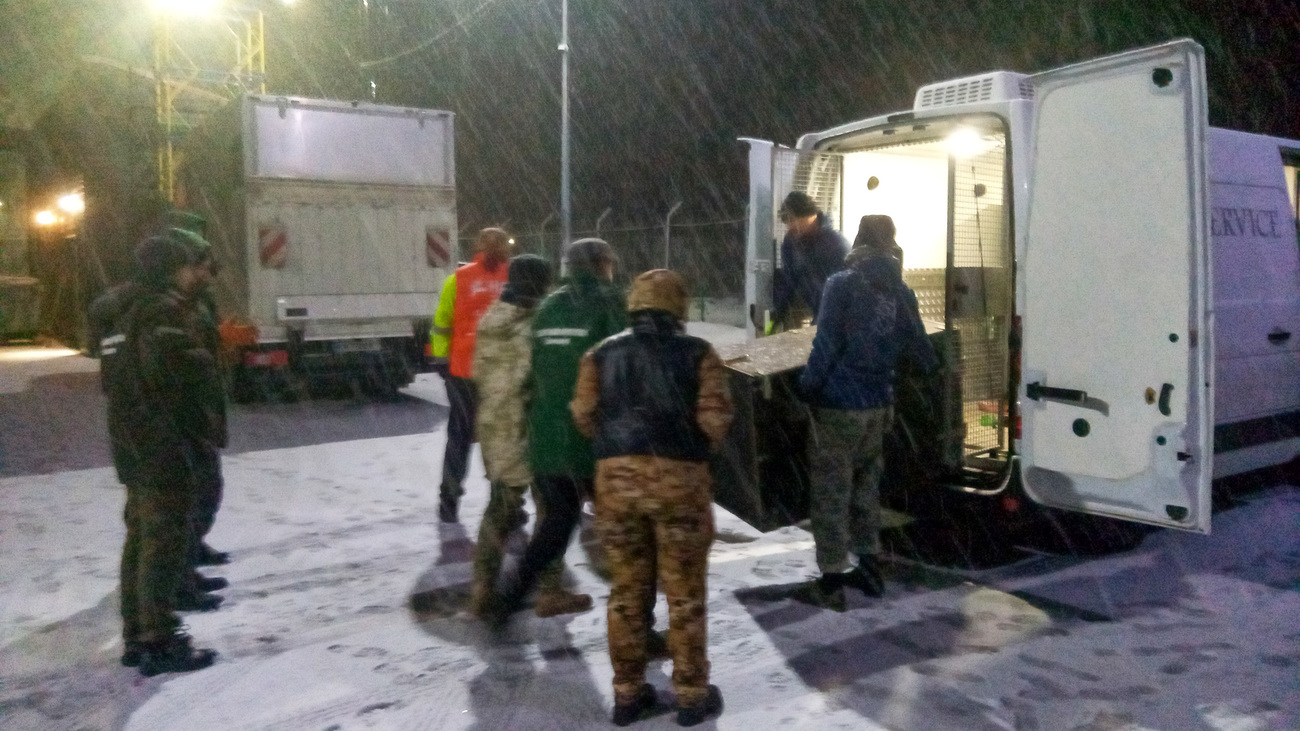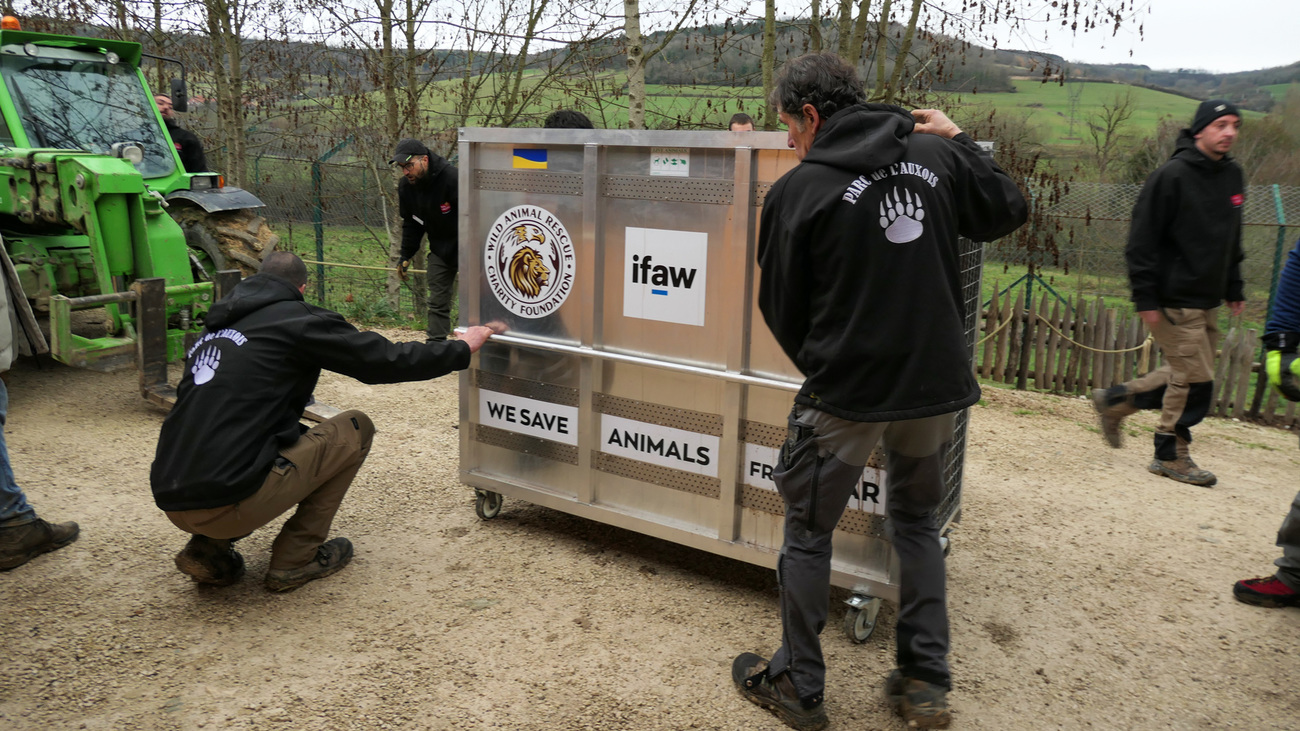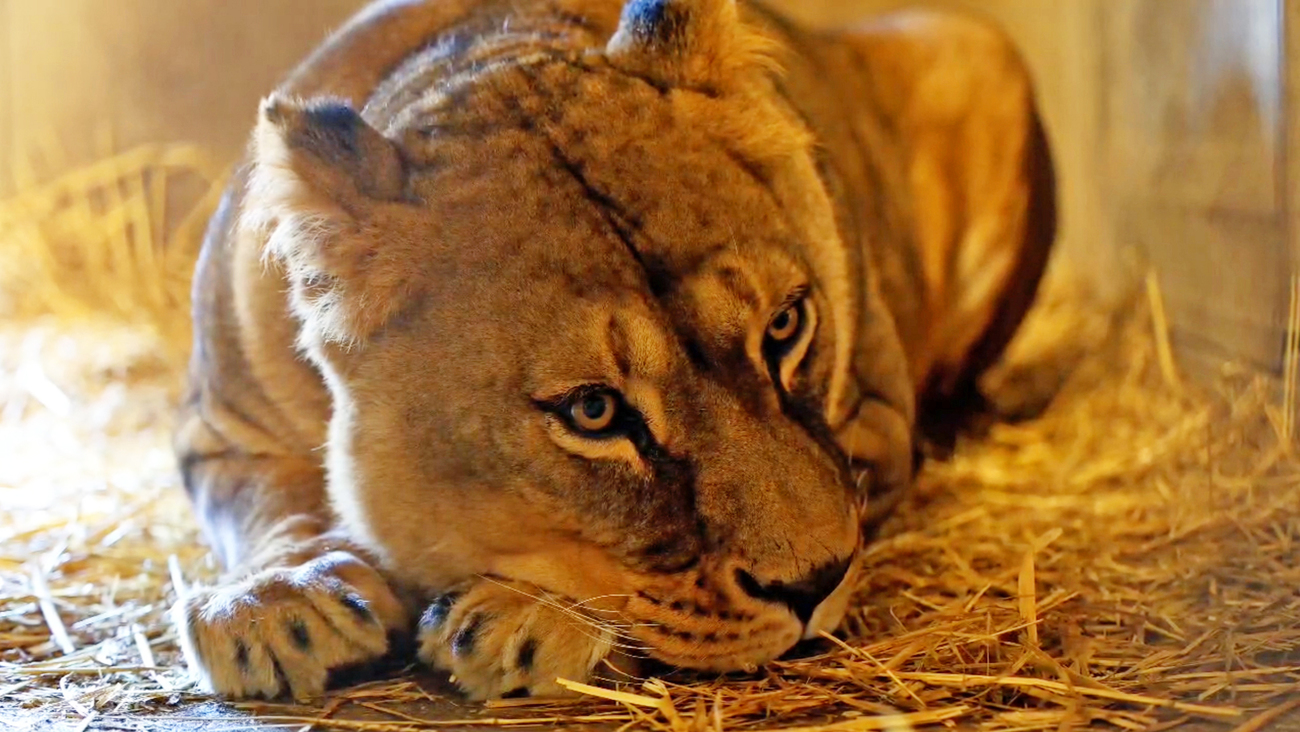Rescuing animals during disasters – Europe
save human lives by saving animals before, during and after disastersHow I helped save lions from war in Ukraine
How I helped save lions from war in Ukraine
Written by Natalia Gozak, IFAW’s Wildlife Rescue Officer Ukraine
The war in Ukraine has had devastating consequences for humans, wildlife, and the places they all call home. IFAW has been carrying out emergency aid activities for animals and people since the war started—including animals bred in captivity that can’t be released into the wild because they’re dependent on humans and aren’t native species here.
For these animals, we need to find a suitable sanctuary where they can heal from the stress of war and from the mistreatment they suffered in captivity.
Last week I was part of a team that transported three adult lions out of Ukraine. We drove Atlas, Luladja, and Queen 2,500 kilometres (around 1,550 miles) across Europe to Parc de l’Auxois in Bourgogne, France. An operation like this one is very tricky, requiring funding and lots of logistical planning between multiple organisations and government offices. And, of course, because the animals don’t know what’s happening, the transport has to be carried out in ways that will minimise their stress as much as possible. They’ve already been through so much.
Along the way, I kept this journal of my incredible journey with the lions from a place where their lives were in constant danger to one that we expect will be their forever home.
Monday 22 January
I’m starting near Kyiv and traveling from Wild Animal Rescue, where Natalia Popova has done a tremendous job caring for big cats during the war. She's looked after Atlas, Luladja, and Queen since summer 2022.
Atlas is the only male of the three. He was rescued from a private owner near Kyiv who refused to take care of him any longer because the lion became more aggressive after the heavy shelling in the Kyiv region during the first few months of the invasion. Unfortunately, the care he had given Atlas until then was very poor. Many people who buy exotic animals severely underestimate the reality of their needs. Atlas had wounds from the cold concrete floor of his small enclosure and was severely overweight. He weighed nearly 2.5 times what he should when he arrived at Wild Animal Rescue.
Luladja and Queen had both been rescued from eastern Ukraine and had spent time together in temporary enclosures. When they came to Wild Animal Rescue, Queen was overweight and Luladja underweight—they’d been fed together, and Queen ate most of the food. Natalia separated them for mealtimes, and they’re both healthier now.
After so much upheaval in their lives, today is the long-anticipated day when we can finally move them to a safe new home. After a full day of preparations and the process of sedation, we load the lions into new crates and then into a new vehicle, all of which IFAW funded. Tonight, we will drive through the night to Domazhyr in the Lviv region, near the Polish–Ukrainian border.

Tuesday 23 January
Early this morning, we arrive safe and sound with the lions at Domazhyr in the Lviv region. There, we meet up with the M&M Zoo Service transportation team, which IFAW hired to transport the lions the rest of the way to their new home. The lionesses get transferred to new crates that fit into M&M’s vehicle.
After a short break, we leave for the nearest border crossing on the Polish–Ukrainian border. However, just after we leave Domazhyr, the vehicle with the lions has to stop on an ice-covered road going up a small hill. It’s too slippery and dangerous to continue. Luckily, local animal rescue colleagues help our team find an alternative route, and we are on our way again.
All roads in the area are covered in snow and it's very cold, so the coming hours will still be tricky until we reach the border area.
Wednesday 24 January
We make it across all the snowy, ice-covered roads in Ukraine, only to be stuck at the border with an administrative hiccough between Ukrainian, Polish, and French customs officials. IFAW's team in France swiftly calls around and manage to get things sorted.
The transportation team and I did have to stay at the border overnight in the car waiting for the veterinary office to open in the morning, so we have about a 10-hour delay, but we're now with the Polish customs and veterinarian. We hope we will be able to continue our journey in the next few hours. We will still need to cross half of Europe with worrying news about French farmers’ protests blocking our route.
Atlas was not reloaded to another crate at Domazhyr, so he's feeling best out of all three (still not great of course, as they're in small crates in a moving vehicle, not knowing what's happening to them). But Luladja and Queen were very stressed after the reload and stayed frozen. However, we can tell that they are now moving around, because we can feel the sway of the car when they do so, which means they're doing a little better.
Around 7 p.m. we finally arrive at Wrocław, where we will take a 9-hour break. The lions have been given water and food. They all look to be okay. Queen was initially sitting in the corner of her crate, frozen, but when we backed away from the car and left her alone, she immediately started eating all the meat.

Thursday 25 January
We depart Wrocław around 5 a.m., aiming to get to our final destination in France in one day—but that depends on traffic and the farmers’ protests.
This time, Queen is eating well and isn't hiding anymore. Atlas isn't eating very well, but he is active and we can hear him roaring in the back. I hope other people do not hear him, as it might startle them.
Around 6 p.m. we cross the border into France—our final border crossing! A few hours ago, during a short break, we checked the lions and they were doing fine. We will take a rest now, and then early tomorrow morning we'll cover the last leg of the journey.
After spending four days mostly in a car, I now know that sleeping in a bed is really something to enjoy!
Friday 26 January
We get up around 7 a.m. Everyone is tired but feeling well. The lions are fine, though a bit bored. The ladies allow their pictures to be taken.
Around 9:10 a.m. we finally arrive at Parc de l’Auxois. We are welcomed with applause from the various teams present—from the Parc, IFAW France, and media.

After I discuss it with the transportation and Parc teams, we start the offloading procedure. The vehicle is moved as close to the lions' indoor enclosure as possible. Then a forklift offloads the crates one by one, driving them across the outdoor enclosure towards the indoor enclosures. There, the crates are placed against the enclosure, and a trapdoor is opened so the lions can take their first steps into their safe, peaceful new home when they feel ready.
A veterinarian checks them, and they are free to begin exploring at their own pace. It’s been a long journey for all of us, but thanks to IFAW’s supporters these incredible creatures can now experience safety and care unlike anything they’ve ever known.
Related content
Every problem has a solution, every solution needs support.
The problems we face are urgent, complicated, and resistant to change. Real solutions demand creativity, hard work and involvement from people like you.